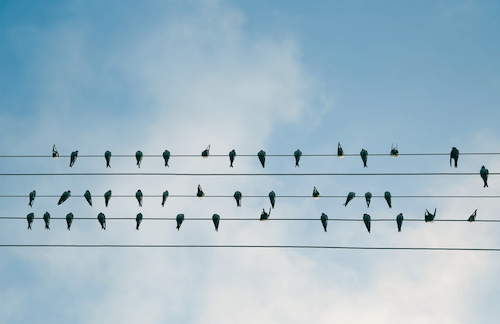In acquisitions, a lot of the manuscripts we receive come unsolicited—we have never heard of the author, but they’ve looked at our submission guidelines and think their work fits with what we publish. We wanted to try a new approach to reach new audiences and expand the circle of writers who already know and submit to Ooligan.
As we are both primarily internet-dwelling creatures, exploring Twitter was a natural progression. And from the time we spent on Twitter, we noticed a large community of agents, editors, authors, and more using the platform to broaden their reach and visibility. The community of writers and publishing professionals on Twitter is vast, but there were a few aspects of the engagement that we thought could help us spark new connections, particularly manuscript wish lists, Twitter pitch events, and personal branding (find us @alyssalschaffer and @joanna_shwaba).
Agents and editors use the Twitter hashtag #MSWL to share concepts they’re looking for (or hoping for) in the submissions they receive. This isn’t meant to act as a writing prompt, but rather to match agents and editors up with writers who are already working on something along those lines. The tweets from individual agents and editors get filtered onto their own profiles on the Manuscript Wish List site. This is a great way to get a feel for what particular agents are looking for, and whether they might be the right fit for you.
Twitter pitch events are designed for authors to tweet out pitches of their book; agents and publishers then like the tweet to express interest in receiving a proposal for that pitch. It allows authors to be seen by a large number of agents and publishers at once, and helps industry professionals find more new voices in a short amount of time. The #PitMad contest (run by the same people who do Pitch Wars) is one of the most well-known, particularly because it’s used for all genres and interests. However, there are many Twitter pitch events that focus on specific niches or demographics, such as #DVpit (for marginalized authors), or #SFFpit (for, you guessed it, science fiction and fantasy).
Less official, daily interactions and, by extension, personal branding on Twitter can also lead to important connections. We’ve devoted a lot of thought and energy into what we tweet and how we engage with people (if you don’t believe us, take a look at our DMs—we send each other drafts to make sure our tweets fit our individual brands). Twitter is a great space to have casual interactions, both personally and professionally, because it allows you to participate in a kind of digital networking. Angie Thomas, author of the bestselling YA novel THE HATE U GIVE, found her agent and her place as a powerhouse in the industry through an agent Q&A.
Over the last year, we’ve experimented with a few initiatives in an attempt to engage with a larger audience of authors, and honestly, we’ve received mixed results. While we didn’t get as many submissions from the pitch events we participated in as we may have expected, we did see more the longer we engaged. When we did a whole week’s worth of #MSWL tweets leading up to our last #PitMad, we saw more people asking questions about Ooligan and what we’re interested in. Similarly, we’ve posted Twitter threads every term for the last year as a call for submissions, and each term, we’ve seen more interest. Although our initial payoff was low, we’re starting to see more online engagement and more consistent submissions.
Though increased submissions and higher visibility for the press are certainly our main goals with this kind of initiative, the real acquisitions are the friends we’ve made along the way. The writing and publishing community on Twitter is a great place to find connection and support.
(And remember: our #MSWL will always and forever include a space opera or steampunk Oregon Trail, so if that’s something you’ve got up your sleeve, please send it in to our brilliant successors, Taylor Thompson, @taylormegon, and Karissa Mathae, @KMathae. They’ve promised to keep a lookout.)

